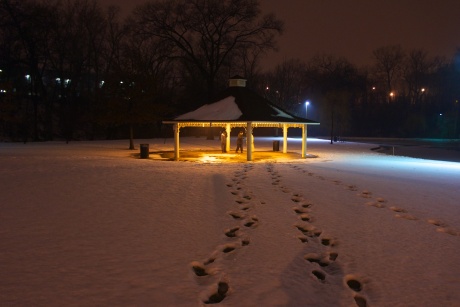A Sermon preached on The Third Sunday in Lent 2010
In the fall of 2010, now former NY Times columnist Bob Herbert wrote, “However you want to define the American dream, there is not much of it that’s left anymore. Wherever you choose to look — at the economy and jobs, the public schools, the budget deficits, the nonstop warfare overseas — you’ll see a country in sad shape…We’re in denial about the extent of the rot in the system, and the effort that would be required to turn things around.” (NYTimes, 11/19/10)
This past weekend, I sat in our Conference Room with some 25 members of our congregation cutting out newspaper headlines that spoke of this rot: bodies buried under Imperial Avenue, U.S. missiles dropping on Libya, corporations not paying taxes, the elimination of collective bargaining for public workers, state and federal budget cuts, nuclear power plants leaking, toys floating in the sea, global climate change, disappearing housing stock, lost jobs, and deteriorating infrastructures, county corruption, and Charlie Sheen. Enough said.
That was the beginning of our time with Janet Walton, Professor of Worship at the Union Theological Seminary. “Fierce Imagination in a Time of Rot” was the title of our daylong Lenten retreat. Quoting poet Adrienne Rich, Janet invited us to “explore the wreck, to see the damage that [has been] done, and to [imagine] the treasures that prevail.” She encouraged us to dive deep into the sea of despair so that we might emerge with the rising tide. And, that we did on the first Saturday of spring.
To listen to my entire sermon:
[audio http://www.trinitycleveland.net/podcasts/sermons/Lind03272011-1115.mp3]









